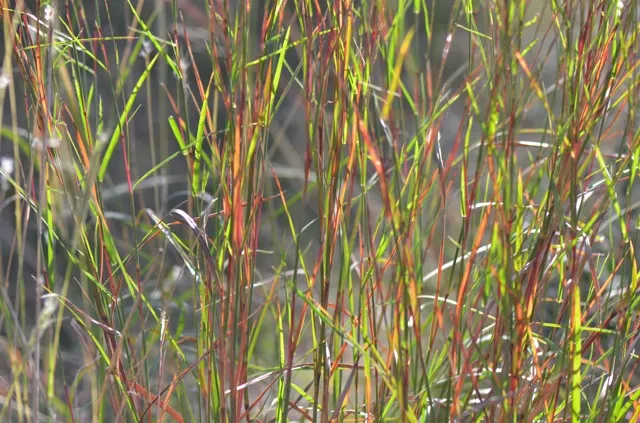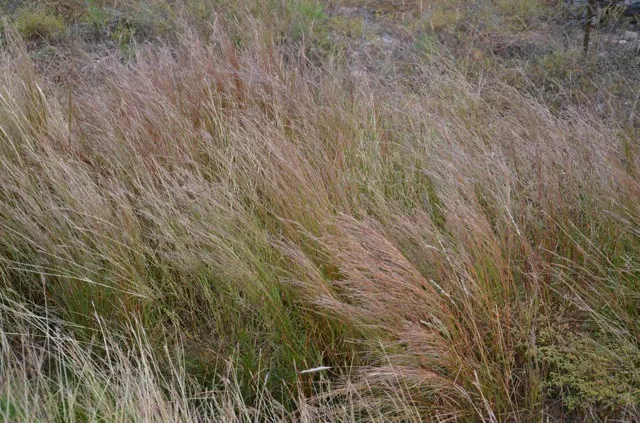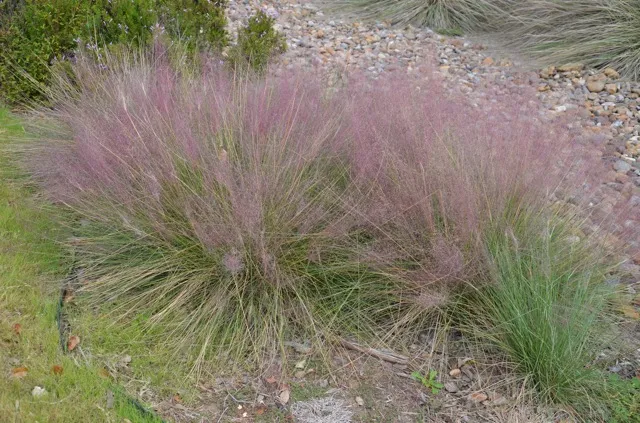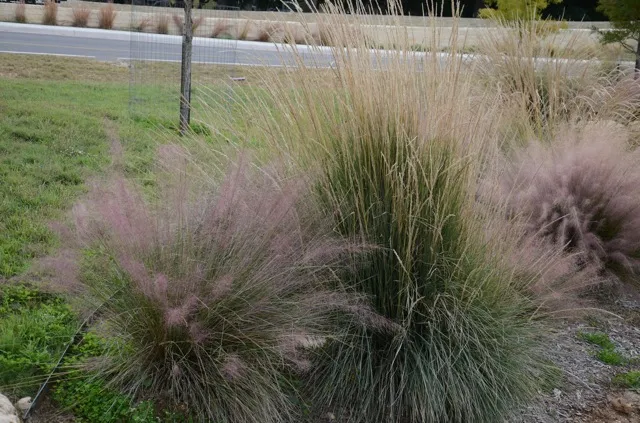By Delmar Cain
We are about midway through the autumn when the light of the mornings and twilight of the evenings make even the fading flowers seem bright. At this time of the year I begin to pay more attention to the grasses many of which are forming their seeds to produce the next generation. They are also producing food and potential denning or nesting material for birds and small mammals.

Probably my favorite is little bluestem (Schizachyrium scoparium var. scoparium), which I rambled through in the fields around our rural home in Upshur County as soon as my mother let me out of the house alone. Unlike where I live here in Kendall County, the sandy soil was deep and the rainfall was plentiful. Little bluestem, which has an extensive root system that can extend downward as much eight feet, lined the right of way on the county roads and covered many of the fields that had been farmed in previous years. I spent many hours chasing grasshoppers of all sizes and colors, wondering what kind of tobacco they had been chewing.

A native perennial bunchgrass and one of the big four grasses of the American tall grass prairie, little bluestem begins with bluish green leaves in the spring. During the summer the stems with silvery seed heads reach two to three feet tall, then turn a russet red in the fall. It tolerates a wide variety of well-drained soils and some shade. It is a host plant for some skipper butterflies and the common wood-nymph. It will please you in your flower garden or along the boundaries of your property. Don’t mow it if you want to encourage it and my advice is to encourage it at every opportunity. You can help in a small way in bringing back an important part of our Texas heritage. To find out how we lost it I urge you to read a brief pamphlet by Dr. Barron Rector, Associate Professor and Extension Range Specialist, Texas Agrilife Extension Service, in College Station. The pamphlet can be accessed at: http://austin-agrilife-org.wpengine.netdna-cdn.com/files/2011/08/NativeGrasslandPrairiesbyDrBarronRector_16.pdf

Another of my favorite grasses is big muhly or Lindheimer’s muhly (Muhlenbergia lindheimeri), also a native perennial bunchgrass. Unlike little bluestem, which is native to almost every state in the lower 48 states, Lindheimer’s muhly is native mainly to the Edward’s Plateau and some adjoining counties. When we built our house in Boerne, Linheimer’s muhly was included in the plants installed by our landscaper. It performed very well and I added more in the next two years. Its tall (2-5 ft) blue-green to gray foliage and long white panicles or seed heads, which can last from May until November, make this grass a good Hill Country substitute for the non-native pampas grass, a native of southern South America. In June of 2010 Bill Ward wrote an article about Lindheimer’s muhly, which can be found on the Boerne NPSOT website at: http://www.npsot.org/wp/boerne/
Another native muhly grass, which my wife finds attractive, is gulf muhly or pink muhly (Muhlenbergia capillaris). It was planted in our original landscaping at our house, but failed to thrive, either from lack of water or more probably not enough sun. It is native to Texas and to the United State, but is generally found, as its name would imply, along the Gulf Coast. But I know it does grow well in our area because my wife points it out regularly on our drives to Boerne and to San Antonio.

Gulf muhly is also a perennial grass, which puts up a multi-branch seed heads that are purple. In the fall the seed heads become feathery and turn deep pink. The grass including the seed heads can be as tall as 3 1/2 feet. I must agree with my wife that in the fall light the grass is most attractive.
Besides its wonderful fall color another reason to mention gulf muhly, is the, so far sketchy, information that gulf muhly has been crossed with big muhly. My friend Marvin Hatter told me that he had seen something that resembled big muhly but had seed heads that were pink like gulf muhly. A web search revealed that there is something called Muhlenbergia “Pink Flamingo”. More research is in order. A plant as hardy as big muhly with a pink seed heads would be a great addition to our flower gardens.
